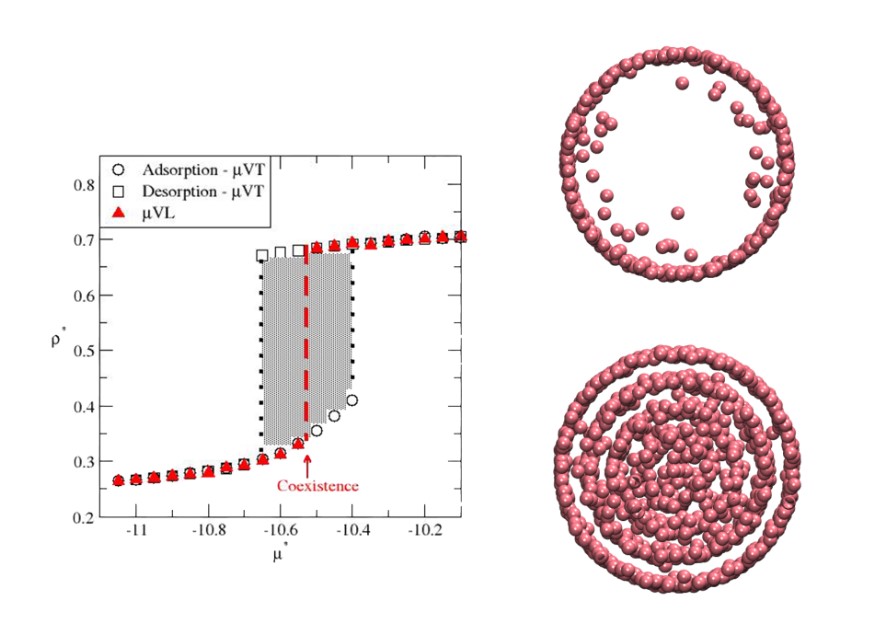Research
The Out of Equilibrium Group @ UML explores the physics and mathematics of systems driven far from equilibrium. We study how complexity, fluctuations, and information processing emerge across different scales, from quantum materials and active matter to machine learning and algorithmic dynamics.
Our research branches across several interconnected themes:
Superstatistics. Superstatistics provides a framework for understanding driven nonequilibrium systems with slowly varying intensive parameters. It combines local equilibrium statistics with large-scale fluctuations, extending traditional thermodynamics and encompassing Tsallis statistics as a special case. This approach offers insight into complex behavior observed in turbulence, biological systems, and quantum dynamics.
Restricted Boltzmann Machines and Nonequilibrium Thermodynamics. We investigate Boltzmann machines and restricted Boltzmann machines (RBMs) as models of nonequilibrium thermodynamics. These generative neural networks provide a statistical mechanics perspective on learning, energy landscapes, and stochastic relaxation. Our current focus includes:
-
Thermodynamics out of equilibrium: Understanding learning dynamics as entropy-producing processes.
-
Entropy production and information flow: Quantifying how learning dissipates energy and drives order formation.
-
Dissipation and efficiency: Exploring analogies between biological computation and machine learning energy costs.
Quantum Machine Learning and Quantum Information. We develop quantum machine learning (QML) algorithms that exploit quantum parallelism and entanglement to accelerate generative modeling and inference. Our current directions include:
-
Quantum-enhanced Boltzmann machines for high-dimensional sampling.
-
Hybrid quantum-classical learning applied to open quantum systems.
-
Control and mitigation of correlated quantum noise through AI-driven feedback.
Control Strategies for Open Quantum Dynamics. In collaboration with Ribeiro’s group, we design optimal control strategies for open quantum systems using deep learning. Our goal is to counteract decoherence and correlated noise for precise single- and two-qubit gate operations, essential for fault-tolerant quantum computing and quantum sensing. This research bridges nonequilibrium quantum thermodynamics and machine learning control theory.
Anyons, Time Crystals, and Topological Phenomena. We explore topological phases of matter and their dynamic properties under nonequilibrium conditions. Topics include:
-
Anyons and non-Abelian excitations in fractional quantum systems.
-
Time crystals: periodically driven systems that spontaneously break time-translation symmetry.
-
Topological entropy and emergent order in dissipative and actively driven media.
These efforts connect topology, statistical mechanics, and algorithmic learning to reveal new modes of organization in complex physical systems.
Active Matter and Nonequilibrium Self-Assembly. In collaboration with the MSNEP group, we study active matter, where individual components consume energy to generate collective motion. Using simulations and experiments on light-activated self-propelled colloids, we investigate how activity and fluctuations lead to emergent behavior, reconfigurable structures, and pattern formation in nonequilibrium conditions.
We also examine how colored noise impacts stochastic transport and how deviations from white-noise assumptions influence motion in fluctuating environments.
The Central Role of Entropy in Adiabatic Ensembles. Using advanced statistical mechanics frameworks, we revisit the thermodynamics of adiabatic ensembles, including the microcanonical, isoenthalpic-isobaric (N,P,H), grand-isochoric adiabatic (μ,V,L), and grand-isobaric adiabatic (μ,P,R) ensembles. By extending Legendre-Laplace transformations, we explore how entropy governs equilibrium and nonequilibrium constraints, linking thermodynamic geometry to emergent learning dynamics and information transfer.

Quantum-Enhanced Monte Carlo Simulations. We develop quantum-enhanced Monte Carlo algorithms to accelerate sampling in statistical physics, optimization, and generative modeling. Quantum processors offer potential speedups via superposition and interference, opening new paths to simulate complex probability landscapes inaccessible to classical computation.
Biomedical Applications. In collaboration with Yaroslavsky’s group, we develop physics-informed machine learning and fluorescence polarization approaches for biomedical optical imaging. Our AI frameworks improve cancer diagnostics and treatment planning by merging theoretical modeling, image analysis, and experimental data.
… and Beyond
We continue to push the boundaries of nonequilibrium science, connecting information, energy, and matter through interdisciplinary approaches at the interface of physics, computation, and biology.